
Filter News
Area of Research
- (-) Biology and Environment (23)
- (-) Energy Science (50)
- Biological Systems (1)
- Computational Biology (1)
- Computational Engineering (1)
- Computer Science (1)
- Fusion and Fission (4)
- Isotopes (5)
- Materials (30)
- Materials for Computing (4)
- National Security (3)
- Neutron Science (17)
- Nuclear Science and Technology (1)
- Supercomputing (45)
News Type
News Topics
- (-) Biomedical (17)
- (-) Energy Storage (47)
- (-) Frontier (4)
- 3-D Printing/Advanced Manufacturing (53)
- Advanced Reactors (5)
- Artificial Intelligence (12)
- Big Data (9)
- Bioenergy (55)
- Biology (64)
- Biotechnology (14)
- Buildings (19)
- Chemical Sciences (18)
- Clean Water (12)
- Composites (9)
- Computer Science (29)
- Coronavirus (18)
- Critical Materials (4)
- Cybersecurity (9)
- Environment (96)
- Exascale Computing (6)
- Fossil Energy (2)
- Fusion (2)
- Grid (22)
- High-Performance Computing (18)
- Hydropower (6)
- Isotopes (2)
- Machine Learning (10)
- Materials (25)
- Materials Science (18)
- Mathematics (4)
- Mercury (8)
- Microelectronics (1)
- Microscopy (13)
- Molten Salt (1)
- Nanotechnology (10)
- National Security (7)
- Neutron Science (13)
- Nuclear Energy (6)
- Partnerships (13)
- Physics (2)
- Polymers (7)
- Quantum Science (2)
- Security (6)
- Simulation (14)
- Space Exploration (1)
- Summit (13)
- Transportation (34)
Media Contacts

Burak Ozpineci started out at ORNL working on a novel project: introducing silicon carbide into power electronics for more efficient electric vehicles. Twenty years later, the car he drives contains those same components.
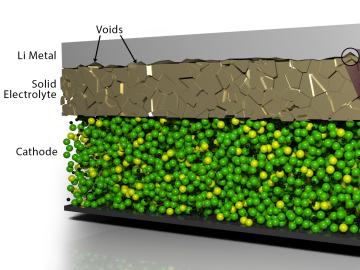
Scientists at the Department of Energy’s Oak Ridge National Laboratory have developed a scalable, low-cost method to improve the joining of materials in solid-state batteries, resolving one of the big challenges in the commercial development of safe, long-lived energy storage systems.
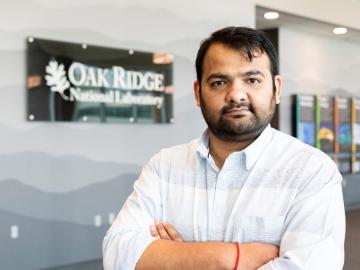
Marm Dixit, a Weinberg Distinguished Staff Fellow in the Emerging and Solid-State Batteries Group at ORNL, has been awarded a Toyota Young Investigator Fellowship for Projects in Green Energy Technology from the Electrochemical Society.
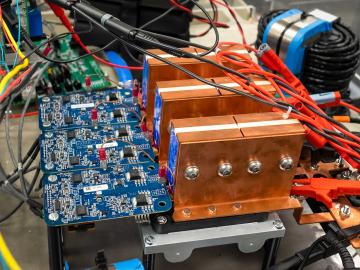
ORNL has licensed its wireless charging technology for electric vehicles to Brooklyn-based HEVO. The system provides the world’s highest power levels in the smallest package and could one day enable electric vehicles to be charged as they are driven at highway speeds.

Researchers at ORNL have developed a robotic disassembly system for spent electric vehicle battery packs to safely and efficiently recycle and reuse critical materials while reducing toxic waste.

Scientists at ORNL and the University of Wisconsin–Madison have discovered that genetically distinct populations within the same species of fungi can produce unique mixes of secondary metabolites, which are organic compounds with applications in
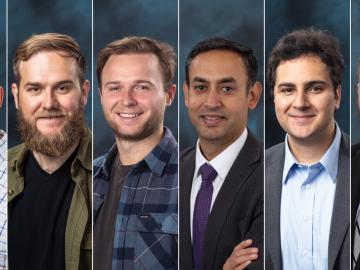
Six science and technology innovators from across the United States will join the fifth cohort of Oak Ridge National Laboratory’s Innovation Crossroads program in June.
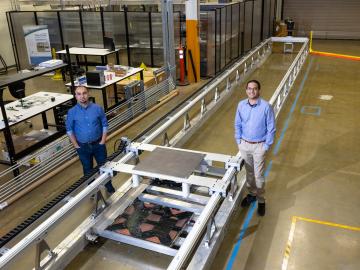
Consumer buy-in is key to the future of a decarbonized transportation sector in which electric vehicles largely replace today’s conventionally fueled cars and trucks.

Belinda Akpa is a chemical engineer with a talent for tackling big challenges and fostering inclusivity and diversity in the next generation of scientists.

Through a consortium of Department of Energy national laboratories, ORNL scientists are applying their expertise to provide solutions that enable the commercialization of emission-free hydrogen fuel cell technology for heavy-duty


